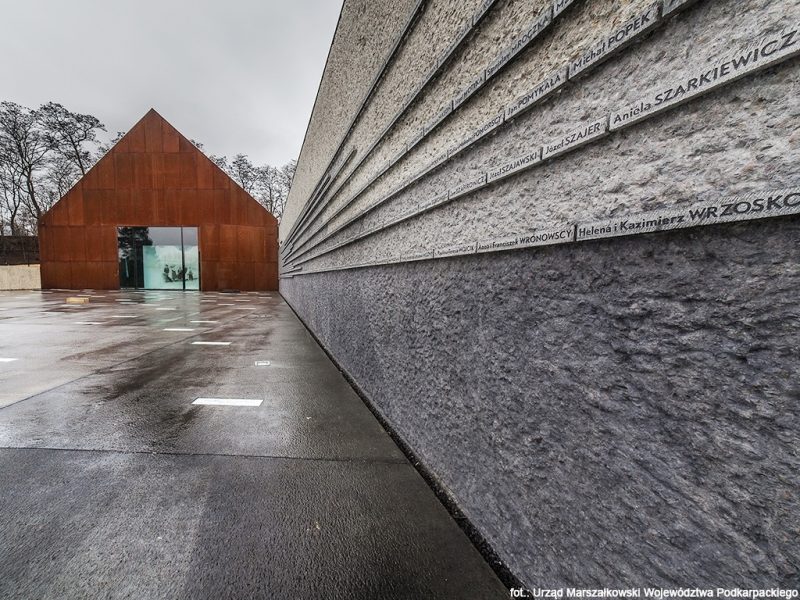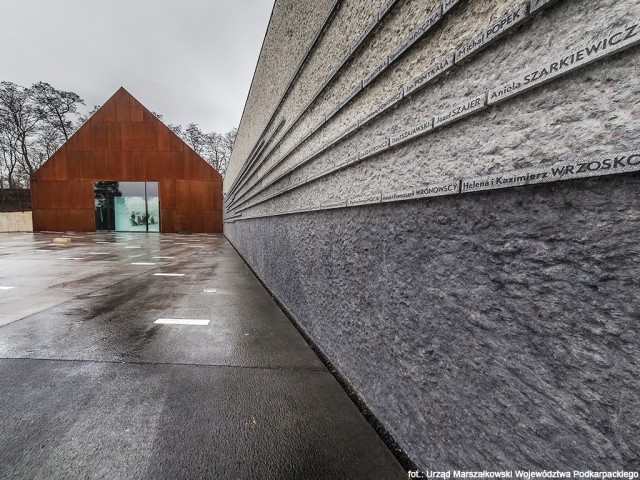In March, Poland opened the doors to the public at a new museum honoring Poles who lost their lives helping Jews during the World War II genocide. The museum is located at a site which is associated with some of those who bravely helped Jews. It resides directly on the spot where Nazis executed a young Polish family in cold blood just for providing shelter to Jews.
Polish President Andrzej Duda cut the ribbon to officially open the museum and formally recognized the descendants of Polish rescuers who were present. He credited those people, who had to make life-altering decisions in the midst of a war, with making admirable choices. Polish citizens knew the decision to help Jews came with grave consequences if caught. Poland was the only Nazi-occupied country that implemented the death penalty for saving Jews.
The museum is located in the southeastern village of Markowa. More specifically, this new museum is within the walls of a renovated home that belonged to the Ulma family. On March 24, 1944, this family was slaughtered by German soldiers for simply offering a safe place for Jews. The family consisted of Josef Ulma, his wife Wiktoria, who was seven months pregnant, and their six children. Each one of them was executed on the spot, as well as the eight Jewish people they were hiding in their home.
The museum does not sugarcoat what occurred on that day. Still standing is one of the original doors that holds holes from the bullets fired during the execution. The walls have been pained a rust color, and photos stained with the blood of the victims hang on the wall for all to see. In his speech, President Duda stated powerfully, “Anyone spreading anti-Semitism defiles the Ulmas’ graves, and defiles the reasons why they laid down their lives: dignity, honesty, justice.”
Markowa villagers harbored quite a few Jews in their attempt to hide them from the Nazis, who would have sent them to their death or killed them on the spot. Abraham Segal, who was one of the 21 Jews hidden in Markowa, was unable to attend the ceremony (at 86, the journey all the way from Israel would have been too demanding), but his 31-year-old grandson was there to represent and honor him. The young man acknowledged that none of his family would have existed had it not been for their grandfather’s perseverance, or the help of the Polish people in Markowa.
The museum’s director, as well as the person who conceived it, is a historian named Mateusz Szpytma.
The new museum is being embraced by many. In this month’s ceremony, President Duda, Israeli ambassador Anna Azari, and the descendants of Jews from Markowa lucky enough to have survived all joined together to honor the dead, planting a tree on the museum’s grounds in their memory. In addition, the Roman Catholic Bishop Stanislaw Gadecki, President of the Polish Episcopal Conference, and Poland’s Chief Rabbi Michael Schudrich depicted strong solidarity. All together they joined in prayer over the nearby graves.
More Poles have been recognized as “Righteous among the Nations” by Israel’s Yad Vashem institute, than any other nationality: 6,600 to be exact. This prestigious recognition is a label given to non-Jewish people who participated in helping Jews during WW II.
There were certainly some Poles who joined in the crimes against Jewish people. President Duda acknowledged that this fact can be challenging to accept, but it bodes for a better future when the whole truth has been laid out on the table. In 2000 it was quite shocking for the country when it was confirmed that Polish people had helped round up and burn hundreds of their fellow Jewish neighbors in a barn in the northeastern village of Jedwabne in 1941. However, this museum is meant to shed light on the Poles who not only did the right thing, but risked (and sometimes lost) their lives to do so. The acts of the perpetrators should not overshadow the actions of the Good Samaritans. The truth is all-encompassing, and this museum will help bring attention to the many heroes that stood for dignity, honesty, and justice during that dark time in the history of the world.

